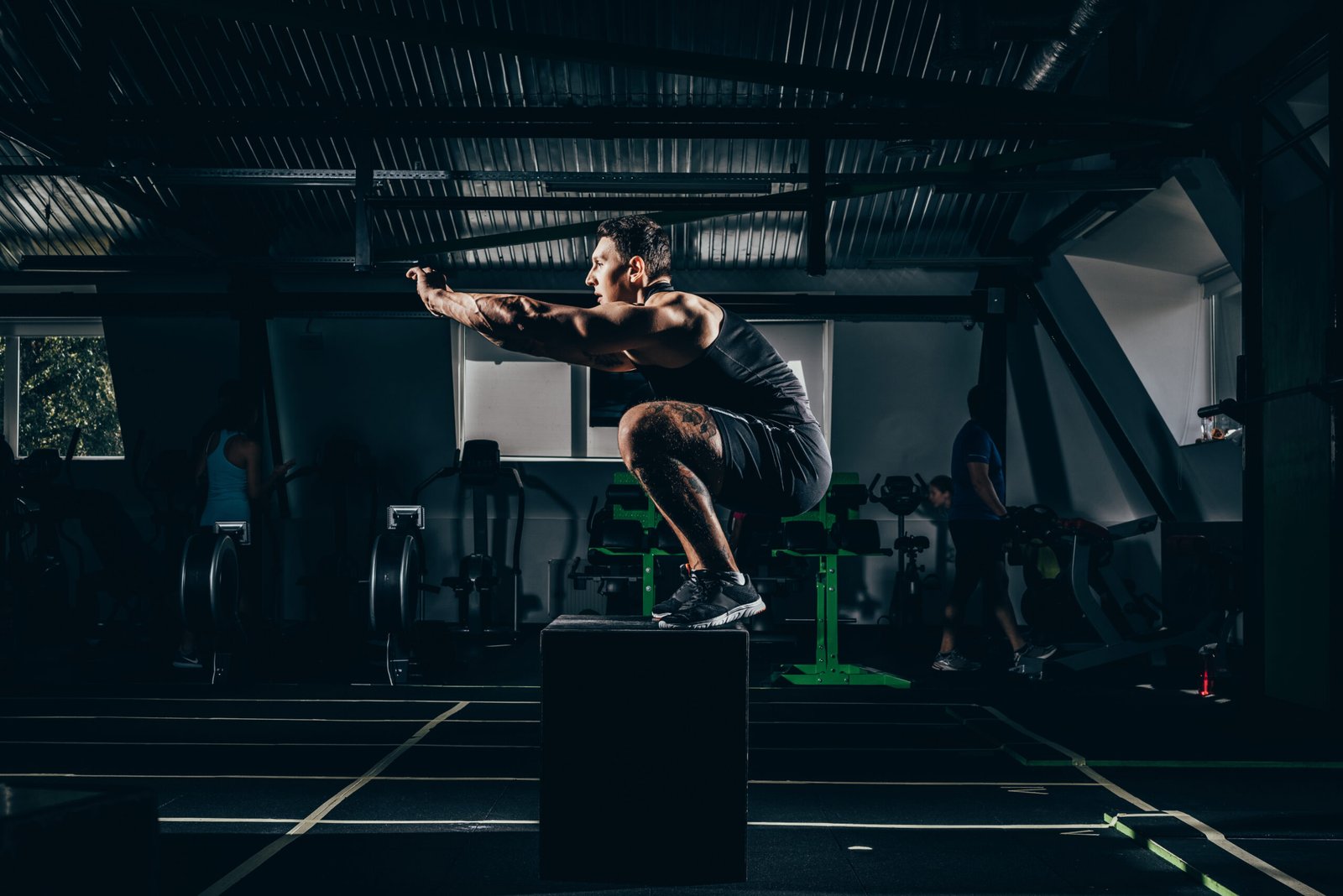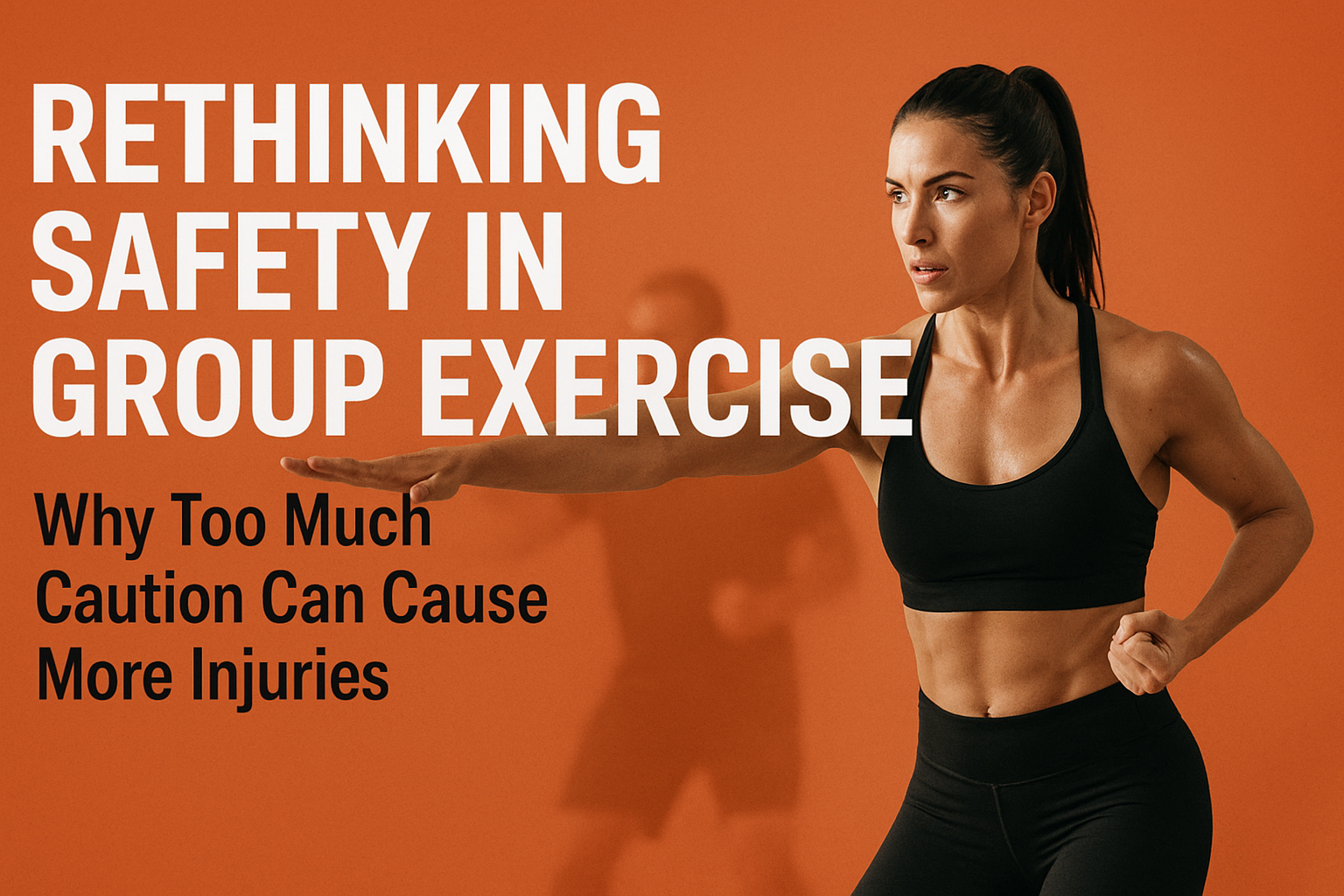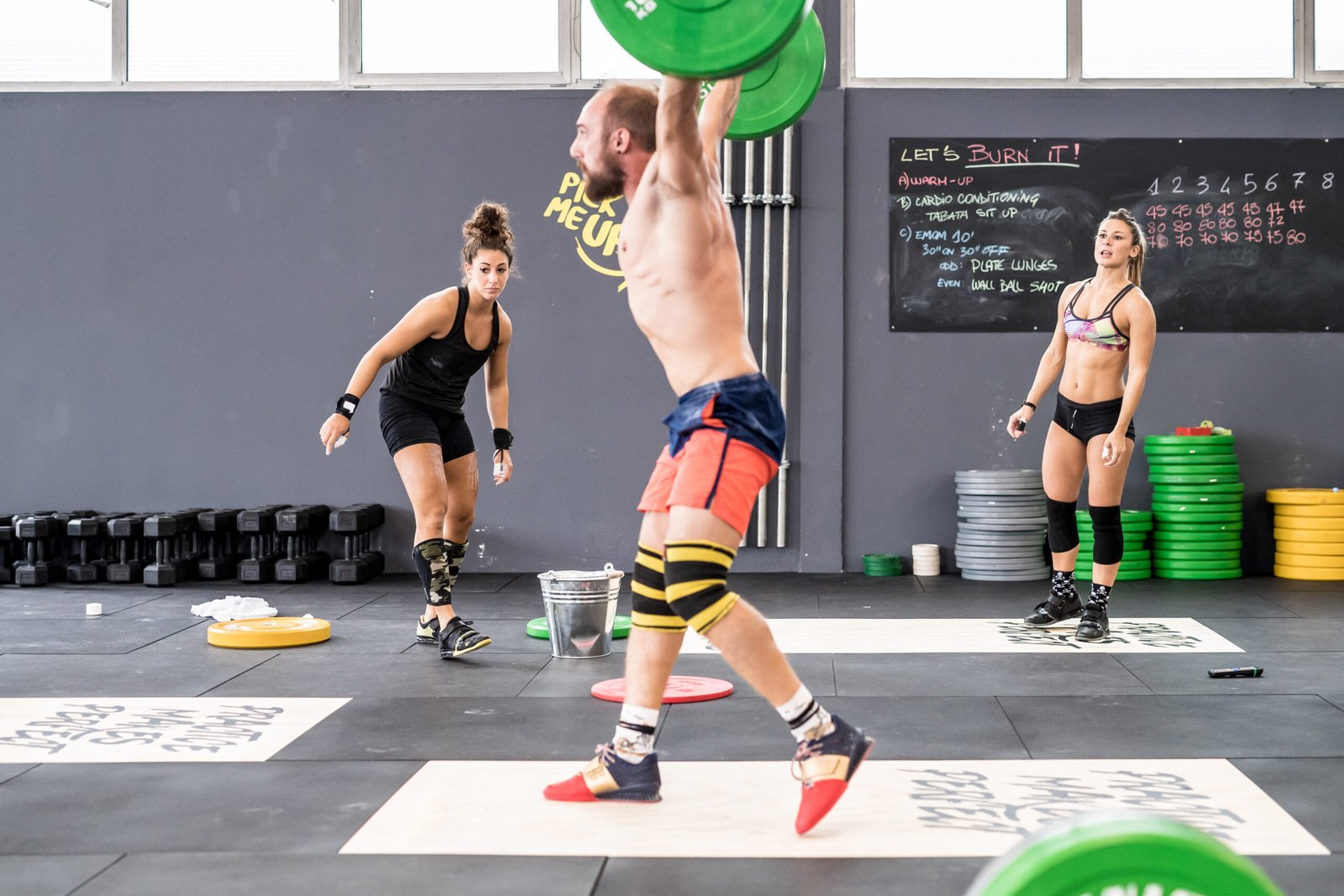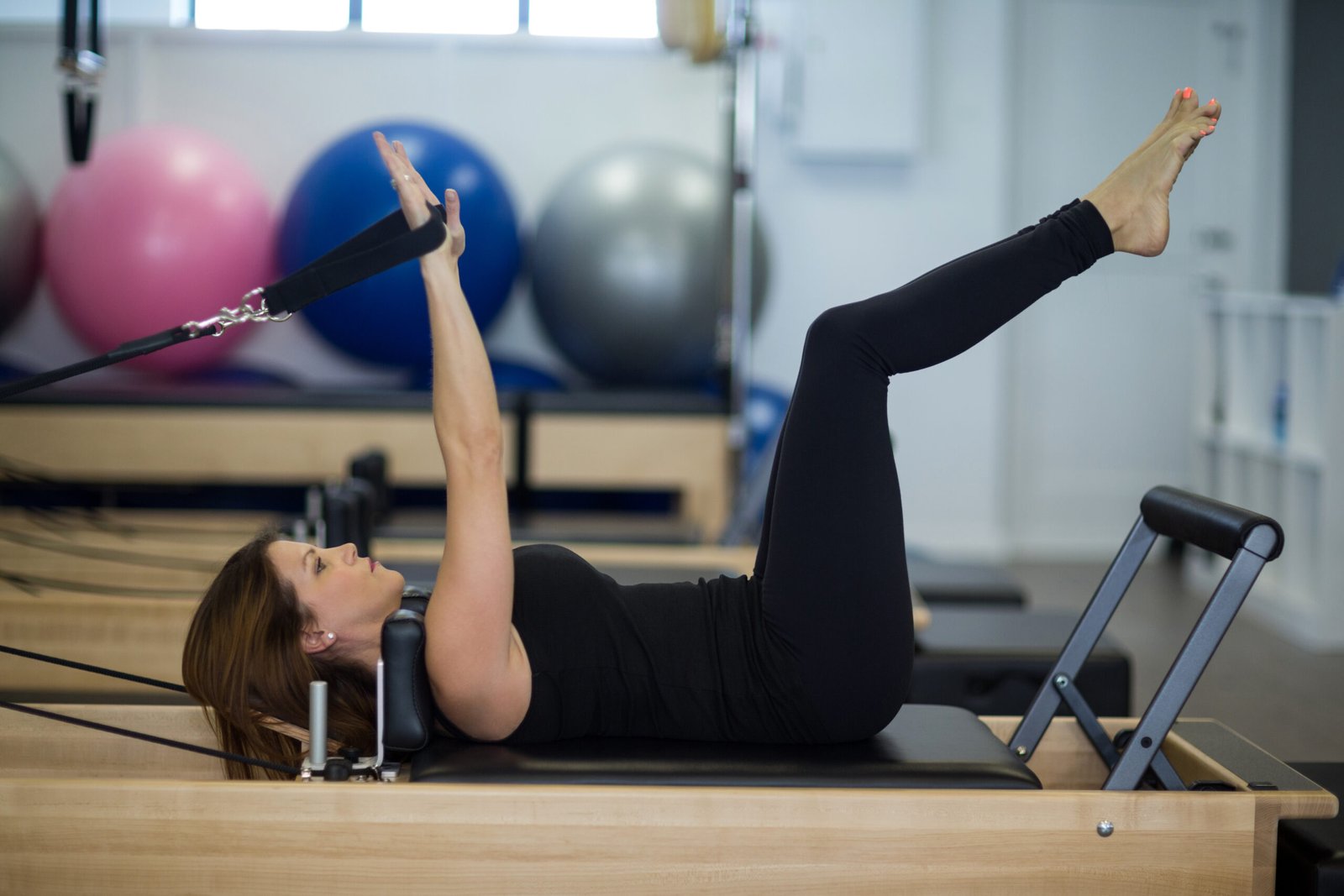In the realm of sports science and athletic performance, the buzz surrounding How Plyometrics Improves Explosive Power for Better Athletic Performance has been steadily gaining momentum. Plyometrics, a form of high-intensity training that involves dynamic and explosive movements, has been recognized for its unparalleled ability to improve power, speed, and coordination. Athletes across various sports are increasingly incorporating plyometric exercises into their routines, witnessing firsthand the transformation in their performance and overall agility. By focusing on fast-twitch muscle activation, plyometrics serves as a critical link between strength and speed, offering athletes the edge they need to excel.
Plyometric Training: Unlock Your Explosive Power for Optimal Health
| Benefit | Description | Example Exercises |
|---|---|---|
| Improves Speed and Power | Plyometric exercises develop explosive power, making athletes faster and stronger. | Box jumps, Medicine ball throws |
| Enhances Coordination and Balance | Improves neuromuscular control and balance, critical for sports. | Single-leg hops, Agility ladder drills |
| Strengthens Muscles and Joints | Builds resilient muscles and stabilizes joints, reducing injury risks. | Squat jumps, Lunge hops |
| Boosts Metabolic Rate | High-intensity nature of plyometrics increases calorie burn, assisting in weight management. | Jump rope, Burpee |
Plyometric training is defined by explosive exercises designed to enhance athletic performance by activating fast-twitch muscle fibers. These exercises propel athletes into peak physical condition by enabling them to exert maximum force in minimal time. Regular incorporation of plyometrics into workout routines results in notable improvements in coordination, agility, and balance—all vital for excelling in sports. By strengthening muscle and joint capabilities, plyometrics also plays a crucial role in injury prevention, offering a holistic approach to fitness. Additionally, this type of training boosts cardiovascular health and assists in weight management by burning calories efficiently.
– Improves Speed and Power: Plyometric exercises like box jumps and medicine ball throws focus on developing explosive power, making athletes faster and stronger.
– Enhances Coordination and Balance: Drills such as single-leg hops improve balance and neuromuscular control, which are crucial for sports performance.
– Strengthens Muscles and Joints: Exercises like squat jumps help in building resilient muscles and stabilizing joints, reducing injury risks.
– Boosts Metabolic Rate: Due to its high-intensity nature, plyometrics increases calorie burn and supports weight management.
In conclusion, plyometric training offers a comprehensive method for reaching peak athletic performance by delivering enhanced explosive power, resilience, and overall physical health.
Effects of Plyometric Training on Physical Performance: An Umbrella Review
| Physical Performance Area | Effect of Plyometric Training | Example Exercises |
|---|---|---|
| Sprint Speed | Plyometric training enhances leg power, boosting sprinting capabilities. | Depth jumps, Alternate leg bounds |
| Jumping Abilities | Increases vertical and horizontal jumping through explosive leg power development. | Tuck jumps, Hurdle hops |
| Agility and Reaction Time | Improves quickness and reaction time, crucial for fast-paced movements. | Ladder drills, Box drills |
The profound effects of plyometric training make it instrumental in enhancing explosive power, a critical component for athletes across all levels. By focusing on exercises that amplify muscle strength and speed through rapid, potent motions, athletes witness substantial improvements in sprinting capability, jumping height, and agility. Reviews emphasize the importance of consistent practice, as it leads to refined coordination and greater efficiency in executing complex movements. Integrating plyometrics into a regular regimen not only fortifies muscles but also bolsters joint stability, thus mitigating injury risks.
– Increases Sprint Speed: Techniques like depth jumps and alternate leg bounds improve leg power and speed, enhancing sprint performance.
– Improves Jumping Abilities: Tuck jumps and hurdle hops contribute to significant gains in vertical and horizontal jumping.
– Enhances Agility and Reaction Time: Ladder drills and box drills improve athletes’ ability to react and move quickly during crucial game moments.
In sum, the umbrella of plyometric training covers a wide array of benefits that amplify an athlete’s explosive power, ensuring sustained and improved performance.
Effect of Plyometric Training on Sprint Time
| Sprint Improvement Area | Effect of Plyometric Training | Example Exercises |
|---|---|---|
| Explosive Leg Power | Builds the strength and power necessary for explosive sprinting. | Split squats, Bounding drills |
| Acceleration | Enhances the ability to accelerate quickly from a standstill. | Track hurdle drills, Depth jumps |
| Speed Endurance | Improves the ability to sustain speed over longer distances. | Sprint intervals, Complex drills |
Plyometric training is pivotal in enhancing sprint performance by boosting muscle power and contraction efficiency. Through plyometrics, athletes strengthen the explosive force during muscle contractions, resulting in improved sprint times. This training relies on rapid stretch-shortening cycles that are crucial for efficient sprinting. Athletes who diligently incorporate plyometric exercises often see marked advancements in both acceleration and overall speed. Alongside faster sprint times, plyometric training inherently enhances overall athletic agility and endurance.
– Enhances Explosive Leg Power: Split squats and bounding drills sharpen explosive movements required for sprinting.
– Improves Acceleration: Exercises like track hurdle drills and depth jumps focus on quick, powerful starts.
– Boosts Speed Endurance: Complex drills combine strength and speed, enhancing an athlete’s ability to maintain peak speed.
Ultimately, athletes find that consistent plyometric training translates directly into not only enhanced speed but also overall improved athleticism.
Effect of Plyometric Training on Change of Direction Ability
| Agility Component | Effect of Plyometric Training | Example Exercises |
|---|---|---|
| Improves Agility | Enhances the ability to quickly change direction with precision. | L-drill cone drills, Shuffle drills |
| Boosts Reaction Time | Refines the ability to make quick decisions and move in response to stimuli. | Reactive cone drills |
| Builds Muscle Elasticity | Increases the flexibility and power of muscles for faster pivots and turns. | Plyo boxes, Bounding exercises |
Plyometric training significantly enchants an athlete’s ability to swiftly change direction, a vital element of explosive power crucial in many sports. This training enhances neuromuscular coordination, resulting in faster, more efficient movement patterns. Through exercises boosting muscle elasticity and strength, athletes perfect the necessary skills for rapid acceleration and deceleration. Consequently, they experience improvements in agility and reaction time, both vital for sports with frequent directional changes.
– Improves Agility: Drills such as L-drill cone drills and shuffle drills enhance nimbleness for quick directional shifts.
– Boosts Reaction Time: Reactive cone drills enhance decision-making and movement speed in competitive play.
– Builds Muscle Elasticity: Plyo boxes and bounding exercises promote muscle elasticity for faster pivots and turns.
In wrapping up, regular plyometric workouts hone essential directional change skills, contributing to improved overall athletic performance.
Effect of Plyometric Training on Maximal Strength
| Exercise | Target Muscle Group | Power Development Focus |
|---|---|---|
| Jump Squats | Quadriceps, Hamstrings, Glutes | Builds explosive leg power, enhances vertical jump |
| Box Jumps | Quadriceps, Hamstrings, Calves | Improves explosive lower-body power |
| Depth Jumps | Glutes, Hamstrings, Calves | Enhances reactive strength, increases jump height |
| Power Push-Ups | Chest, Shoulders, Triceps | Increases upper-body explosive strength |
Maximal strength sees a significant boost from plyometric training through its engagement of explosive, high-intensity movements activating fast-twitch muscle fibers. This bridge between strength and speed is key for athletes looking to elevate their explosive power. Plyometrics enhances neuromuscular efficiency, which increases the rate of force development and results in more powerful movements. Regular training helps athletes achieve remarkable leg and core strength, optimizing overall performance.
– Increases Force Production: Exercises like jump squats and power push-ups focus on building maximal force.
– Enhances Core Stability: Plyometric push-ups and box drills build robust core strength vital for overall power.
– Improves Neuromuscular Efficiency: Rope skipping and high-knee drills focus on quick muscle recruitment for powerful actions.
With a structured approach to plyometric exercises, athletes witness long-lasting strength improvements, crucial for various sports activities.
Effect of Plyometric Training on Muscular Power and Explosive Strength
A notable improvement in muscular power and explosive strength is a primary benefit of plyometric training. By executing rapid, forceful movements such as jumps and bounds, athletes experience increased explosive strength. Consistent plyometric exercises produce significant gains in vertical jump, sprint speed, and general agility. Athletes reap the benefits of optimized neuromuscular systems, allowing for quicker reaction times and increased movement efficiency, equipping them with a competitive edge.
– Increases Vertical Jump: Box jumps and squat jumps develop height and power in vertical leaps.
– Improves Sprint Speed: Sprint-bound techniques enhance speed and powerful starts.
– Optimizes Neuromuscular Response: Ladder drills improve coordination and response times.
Conclusively, incorporating plyometrics in workouts leads to remarkable power improvements, enhancing athletic prowess.
Effect of Plyometric Training on Vertical and Horizontal Jump Performance

Plyometric training is particularly effective in improving both vertical and horizontal jump performance, thus contributing significantly to enhanced athletic abilities. This training centers on building explosive power through rapid, forceful movements stimulating fast-twitch muscle fibers. Regular plyometric practice elevates muscle strength, coordination, and neuromuscular efficiency, resulting in enhanced jumping capabilities. Athletes benefit as the training translates into better sprint speeds, agile directional changes, and superior competitive performance.
– Enhances Vertical Power: Box jumps target leg power to increase vertical leap.
– Improves Horizontal Leap: Broad jumps and bounding drills hone forward jump techniques.
– Boosts Coordination: Skipping rope and ladder drills refine timing and jump rhythm.
Ultimately, by incorporating plyometrics, athletes not only enhance explosive power but also improve muscle resilience, aiding in injury prevention.
Effect of Plyometric Training on Additional Outcomes
Beyond explosive power, plyometric training improves agility, balance, and coordination, contributing to comprehensive athletic development. Athletes enjoy increased muscle strength and endurance, enabling sustained high-level performance. Regular plyometric practice reduces injury risk, strengthens tendons and ligaments, and provides robust joint support. Furthermore, the enhanced neuromuscular efficiency afforded by this training translates into quicker, precise movements essential for competitive sports.
– Improves Coordination: Cone drills and hurdle steps enhance coordinated movements.
– Boosts Balance: Single-leg box drills improve core stability and balance.
– Reduces Injury Risk: Box jumps and landing mechanics focus on safe, controlled impact.
In sum, plyometric training contributes significantly to enhanced athletic performance and offers a holistic approach to overall physical fitness.
Effect of Plyometric Training on Physical Performance in Non-athletes
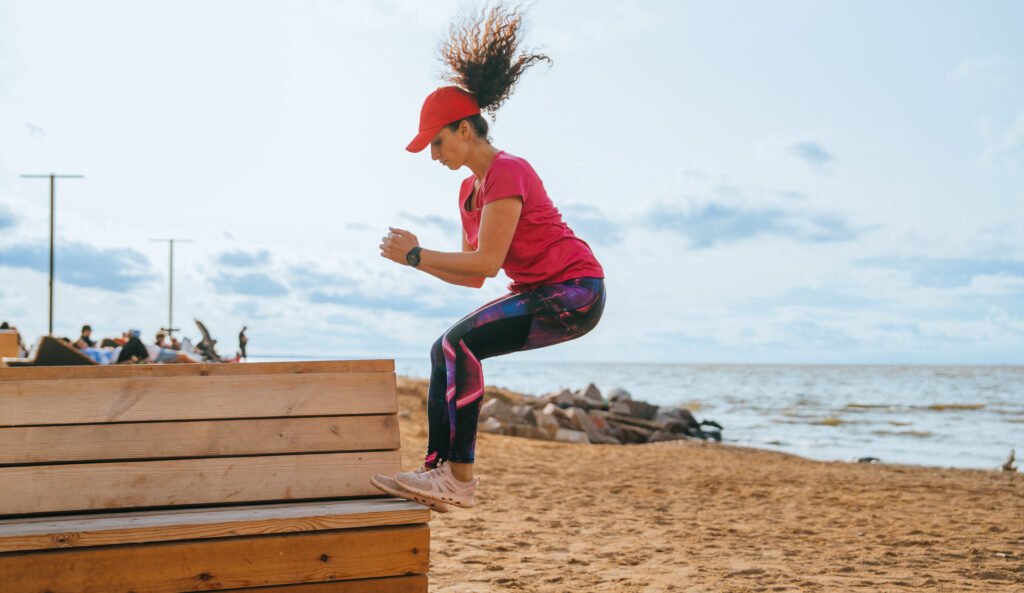
For non-athletes, plyometric training significantly enhances explosive power and overall physical performance by focusing on muscle strength and coordination. Regular plyometric exercises yield notable increases in jump height, sprint speed, and agility, even among those without an athletic background. These exercises involve high-intensity, dynamic movements targeting fast-twitch muscle fibers, crucial for quick, powerful actions. Incorporating plyometrics boosts cardiovascular endurance and reduces injury risk by improving joint stability and flexibility.
– Improves Cardiovascular Health: Jump ropes increase heart rate for better endurance.
– Enhances Muscle Strength: Box squats and lunge jumps build well-rounded muscle strength.
– Energizes Lifestyles: Motivates non-athletes to embrace active living through dynamic exercises.
In summary, when non-athletes engage in plyometric training, they find increased physical capability and enter into more vibrant, energetic lifestyles.
Effect of Plyometric Training on Physical Performance of Athletes in Different Sports
Across various sports disciplines, plyometric training significantly enhances explosive power. It does so by improving muscle strength and power through rapid stretching and contracting movements. Studies consistently demonstrate that athletes experience substantial increases in jump height, speed, and agility through dedicated plyometric work. The training’s efficiency in boosting neuromuscular coordination translates to improved athletic performance, empowering athletes with superior explosive power output.
– Enhances Jump Height: Techniques like tuck jumps develop height-intensive sports skills.
– Increases Speed: Sprints and bounds boost speed for track and field athletes.
– Improves Agility: Quick-feet box drills refine agility necessary for team sports.
Conclusively, plyometric training stands as a cornerstone for athletes seeking to improve their explosive capabilities across diverse sports fields.
Effect of Plyometric Training on Physical Performance in Different Age Groups
| Age Group | Recommended Plyometric Exercises | Focus Areas |
|---|---|---|
| Young Athletes | Box drills, Skip jumps | Agility, Jump power |
| Adults | Push-pull workouts, Squat jumps | Strength, Endurance |
| Older Adults | Step-ups, Water plyometrics | Safe, low-impact fitness |
Plyometric training is unique in its efficacy across various age groups, significantly bolstering explosive power. Young athletes benefit from increased muscle strength and coordination, witnessing improvements in agility and speed. Adults see enhancements in power output and muscle efficiency, crucial for peak performance in competitive sports. Older adults, meanwhile, experience improved muscle function and balance, which can reduce the risk of falls and injuries. Incorporating age-appropriate plyometric exercises ensures safety while maximizing benefits.
– Young Athletes: Box drills and skip jumps to improve agility and jump power.
– Adults: Push-pull workouts and squat jumps to build strength and endurance.
– Older Adults: Step-ups and water plyometrics for safe, low-impact fitness.
In conclusion, plyometric training accommodates all ages, offering customizable programs to suit individual needs and goals.
What Are Plyometrics and How Do They Contribute to Explosive Power in Sports?
Plyometrics comprises high-intensity exercises emphasizing explosive movements, such as jumps and bounds, geared toward enhancing power and speed. These exercises develop muscular power through the stretch-shortening cycle, involving rapid muscle contraction after a quick stretch. Through improved neuromuscular efficiency, plyometrics helps athletes achieve rapid reaction times and forceful movements, crucial in sports demanding explosive actions like sprinting, jumping, and throwing. Regular plyometric training leads to enhanced athletic performance, empowering athletes in high-demand sports.
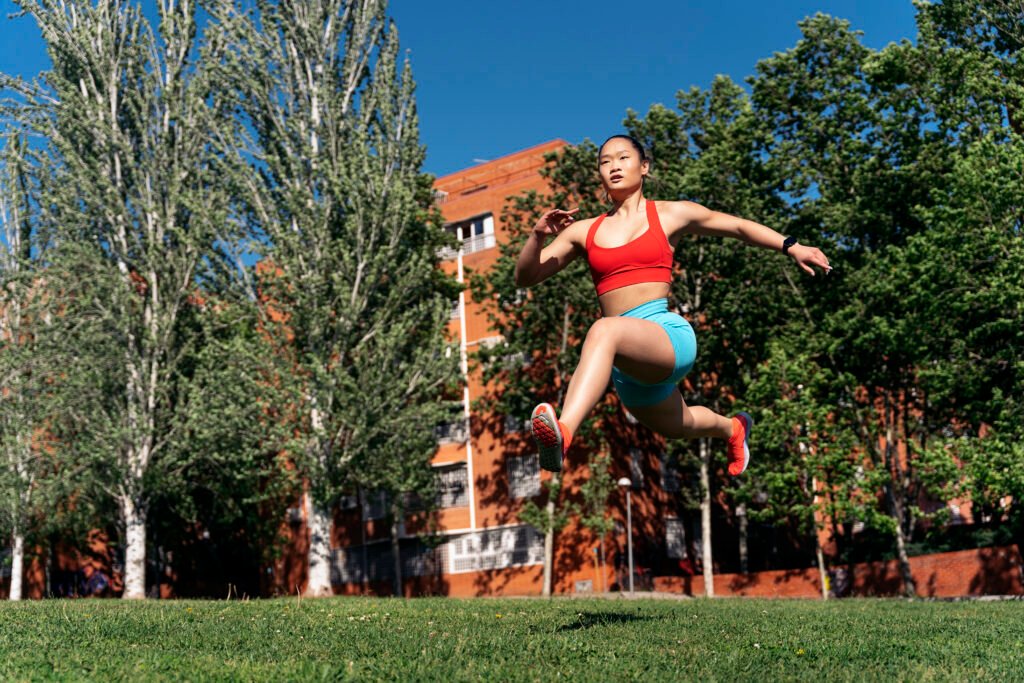
– Enhances Power: Jump squats and depths focus on building explosive leg strength.
– Improves Speed: Bounding drills increase stride and speed.
– Refines Reaction: Reactive box workouts refine rapid response for critical moments.
In essence, plyometrics is foundational in helping athletes reach their full potential in disciplines where power and agility define success.
How Can Athletes Incorporate Plyometric Exercises Into Their Training Routines for Improved Performance?
Athletes can effectively embrace plyometric exercises by gradually incorporating them into their training routines, allowing for adaptation and injury prevention. Focus on exercises targeting specific muscle groups relevant to their sport, such as box jumps for basketball or lateral hops for skiing. It’s crucial to combine plyometrics with strength training for balanced force production. Conducting plyometric sessions 1-2 times weekly ensures adequate recovery while maintaining effectiveness. Prioritize proper technique and landing mechanics to maximize exercise benefits and minimize injury risk.
– Start Gradually: Introduce basic jumps and skips to build initial fitness.
– Target Sport-Specific Needs: Tailor exercises like hurdle hops for track athletes.
– Combine with Strength Training: Integrate weight lifting to complement plyometric benefits.
With strategic integration, athletes can leverage plyometrics for improved performance, achieving a holistic development of power and skill.
Are There Specific Sports That Benefit More from Plyometric Training, and If So, Which Ones?
| Sport | Plyometric Exercises | Benefits for Performance |
|---|---|---|
| Basketball and Volleyball | Box jumps, Tuck jumps, Lateral bounds | Enhances jumping ability, improves agility for quick moves |
| Track and Field (Sprinters) | Bounding drills, Sprint bounds, Depth jumps | Maximizes speed, strengthens legs for explosive starts |
| Football and Soccer | Lateral hops, Box drills, Hurdle hops | Improves agility and direction changes, quick footwork |
| Tennis | Skipping, Lateral bounds, Depth jumps | Boosts court coverage, enhances explosive movements |
Certain sports particularly benefit from plyometric training, especially those requiring quick bursts of speed and explosive movements. Basketball and volleyball players often experience significant gains, as plyometrics enhances jumping ability and agility. Sprinters and track athletes benefit from amplified leg power and acceleration, improving timing and speed. Meanwhile, in football and soccer, plyometrics improves sprint speed and agility, ensuring effective positional play. Tennis players see improvements in court coverage and serve speed when adopting plyometric routines.
– Basketball and Volleyball: Enhanced jumping and agility vital for these court sports.
– Track and Sprinters: Maximized speed and power for explosive starts.
– Football and Soccer: Improved agility crucial for changing direction swiftly.
Ultimately, plyometrics is integral for sports that depend on high levels of quick and explosive actions, bolstering athletes’ capabilities.
What Precautions Should Be Taken to Safely Engage in Plyometric Exercises?
Plyometric exercises, known for their explosive movements and high-intensity nature, offer impressive gains in power and agility. However, to harness these benefits safely and effectively, certain precautions are crucial. Here’s a detailed guide to ensure your plyometric workout is both productive and injury-free.
| Component | Importance for Injury Prevention | Recommended Exercises |
|---|---|---|
| Proper Technique and Form | Ensures movements are executed safely to prevent strain on joints and muscles. | Jump squats with proper landing mechanics |
| Strength and Conditioning | A strong foundation reduces the risk of injury during explosive movements. | Weight training, Core stabilization exercises |
| Adequate Warm-Up | Prepares muscles and joints for intense plyometric movements, increasing flexibility and reducing stiffness. | Dynamic stretches, Jogging, Arm swings |
| Proper Recovery | Helps muscles repair and rebuild, preventing overuse injuries and fatigue. | Active recovery, Rest days |
1. Start with a Solid Foundation
Before embarking on a plyometric routine, ensure you have a foundation of strength and conditioning. Plyometrics demand a significant amount of muscular strength and joint stability, so it’s essential to have been actively engaged in regular strength training. This not only enhances performance but also significantly reduces the risk of injuries.
2. Master Proper Technique
An essential component of safely performing plyometrics is mastering the correct technique. Focus on learning and practicing movements with an emphasis on form, rather than speed or intensity. Proper landing mechanics are especially crucial—land softly with your knees slightly bent to absorb the shock, aligning them with your toes to prevent undue stress on the joints.
3. Warm-Up Thoroughly
A comprehensive warm-up is non-negotiable. It primes your muscles and increases blood flow, preparing your body for the vigorous demands of plyometrics. A warm-up should include dynamic stretches and light cardio, such as jumping jacks or jogging, to gradually elevate your heart rate and enhance flexibility.
4. Progress Gradually
For beginners, it’s important to start with low-intensity, basic plyometric exercises. As your strength, agility, and confidence increase, progressively incorporate more complex and demanding movements. Incrementally increasing the intensity not only builds endurance but also provides your body time to adapt, substantially minimizing injury risk.
5. Use Proper Equipment and Environment
Ensure that you’re conducting exercises on appropriate surfaces. Springy or cushioned flooring, such as gym mats or grass, offer shock absorption and decrease the impact on joints compared to hard surfaces. Additionally, quality footwear that provides adequate support and cushioning is essential to protect your joints during high-impact activities.
6. Incorporate Adequate Recovery
Listen to your body and prioritize rest and recovery. Plyometrics are strenuous and taxing; hence, incorporating ample recovery time between sessions is vital. Rest allows your muscles to repair and strengthen, which is integral to building endurance and preventing overuse injuries.
7. Consult with Professionals
Especially if you’re new to plyometrics, consider consulting with a coach or fitness professional. They can create a customized plyometric routine tailored to your fitness level and goals. Professional guidance ensures exercises are executed with proper form and technique, educating you on how to safely progress.
How often should plyometric exercises be performed to see improvements in athletic performance?
| Athlete Experience Level | Recommended Frequency | Focus Areas |
|---|---|---|
| Beginners | 1 session per week | Focus on form, basic movements |
| Intermediate | 1-2 sessions per week | Incorporate variety, build strength |
| Advanced | 2-3 sessions per week | Periodization, peak power development |
Plyometric exercises, known for their explosive movements, are integral to enhancing athletic performance. However, the frequency with which they are performed can significantly impact their effectiveness and the athlete’s overall improvement. It’s crucial to strike a balance to optimize benefits while reducing the risk of injury.
Understanding Plyometric Training
Plyometric training involves exercises that enable muscles to exert maximum force in short intervals of time, with the goal of increasing power (speed-strength). These exercises, such as jump squats, box jumps, and burpees, are designed to improve the efficiency of the neuromuscular system by enhancing the stretch-shortening cycle of muscles, which helps athletes to jump higher, run faster, and perform better in their respective sports.
Optimal Frequency for Performance Gains
For most athletes, engaging in plyometric exercises 1 to 3 times per week is generally recommended. Here’s a more detailed breakdown:
1. Beginners should start with one session per week, focusing on form and fundamental movements. This allows beginners’ bodies to adapt to the explosive nature of plyometrics while minimizing the risk of injury.
2. Intermediate athletes can handle 1 to 2 sessions per week. At this stage, athletes could start incorporating a variety of plyometric drills into their routines, aiming to build strength and improve coordination.
3. Advanced athletes might consider 2 to 3 sessions weekly, but they should periodize their training. This means alternating the intensity and volume of exercises to avoid burnout and overtraining.
Key Factors to Consider
– Recovery: Adequate rest is crucial. Since plyometric exercises are intense, allowing 48 to 72 hours of recovery time between sessions can help replenish energy stores and repair muscle fibers. Athletes should listen to their bodies and adjust frequency based on individual recovery rates and how they feel physically.
– Sport-Specific Goals: Different sports require varying degrees of plyometric training. For instance, basketball players might emphasize exercises that boost vertical leaps, while sprinters could focus on improving stride power and efficiency.
– Periodization and Phases: It’s beneficial to plan the frequency of plyometrics according to training cycles. During the off-season, focusing on building foundational strength and technique may take precedence, while pre-season might concentrate on peak power development with more frequent plyometric sessions.
– Load and Intensity Adjustments: Adjusting the number of exercises and their intensity can also affect how often they should be performed. High-intensity workouts necessitate longer recovery periods.
Monitoring and Adjustment
Athletes and coaches should continuously monitor performance metrics and physiological responses to plyometric training. Adjustments should be made based on progress, ensuring that the exercise frequency aligns with the athlete’s goals and physical capabilities.
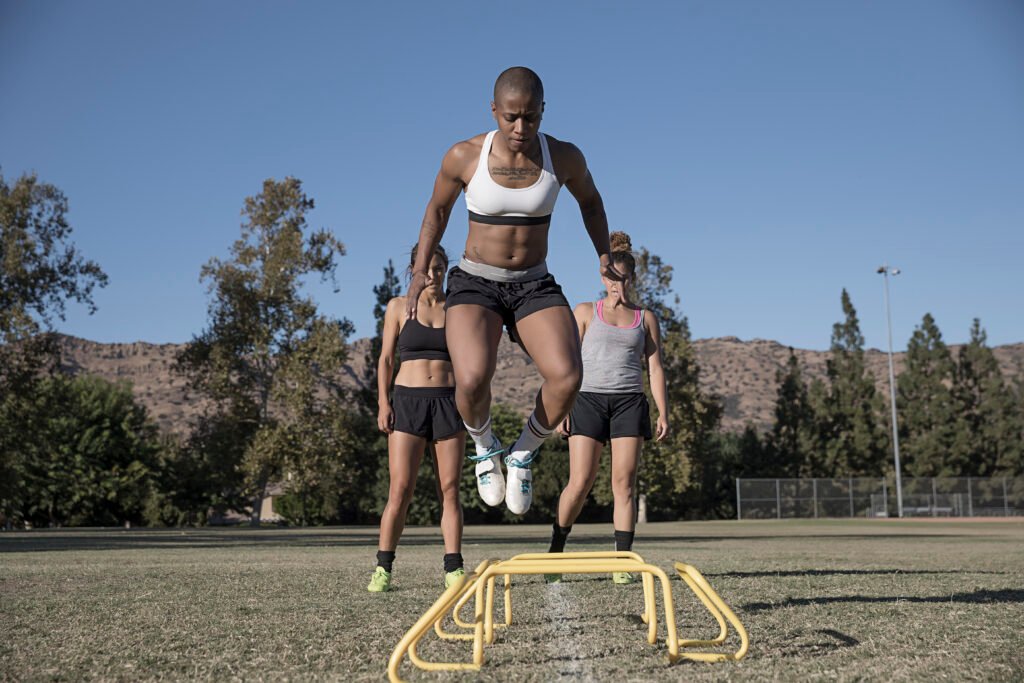
Ultimately, the goal is to integrate plyometric exercises into a well-rounded athletic training regimen, providing variety and dynamism that cater to both short-term improvement and long -term sustainability. When determining the frequency of plyometric exercises, it’s essential to consider the athlete’s level of experience and the specific demands of their sport. Beginners might start with one to two sessions per week, ensuring adequate rest and recovery, while advanced athletes can incorporate more frequent sessions, up to three or four times weekly. Balancing intensity and volume is crucial; too much can lead to fatigue or injury, negating the performance benefits. Tailoring the program to the individual’s needs ensures progression and optimal results. Moreover, plyometric exercises engage the fast-twitch muscle fibers, boosting explosive power crucial for sports like basketball, football, and track and field. By aligning with a structured program, athletes can enhance their vertical leap, speed, and overall power, positioning themselves to achieve peak performance.
In conclusion, incorporating plyometric exercises into a training regimen offers substantial benefits for athletes seeking to enhance their explosive power and overall performance. By engaging in high-intensity, dynamic movements, athletes can optimize their muscular strength and speed, translating to improved performance in various sports disciplines. The ability of plyometrics to bridge strength and speed underscores its value, facilitating rapid force production that is crucial in competitive scenarios. Moreover, the versatility of these exercises allows for customized routines that cater to specific athletic needs and goals. By understanding and integrating plyometrics effectively, athletes can unlock new performance levels, gaining a competitive edge through enhanced agility, power, and endurance. Therefore, regular and structured plyometric training not only boosts physical capabilities but also contributes to an athlete’s confidence and resilience, ultimately paving the way for sustained success in their sporting endeavors.







